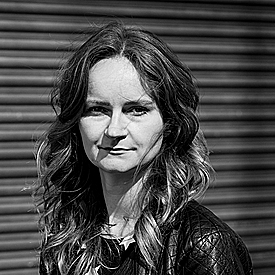Published on 28th May, 2020
Believe that a further shore is reachable from here (Seamus Heaney).
Hi and hope you are well and healthy. Here at SCI we are about to publish two stories of change – case studies – that narrate the innovation our partners Destin Commun and International Centre for Policy Advocacy (ICPA) have given to the world of communication and narrative, and what impact they have had on the migration sector. We hoped, at the start of our partnerships, that we would all find a way to open people’s minds and touch people’s hearts, thereby transforming how we welcome and integrate migrants, refugees and those perceived as others. That communities would expand their understanding of ‘us’ to encompass ‘all’.
The case studies reveal that it is possible. It is possible to include, to strengthen, to create and to value each member of the community. The work was customised by Destin Commun and ICPA to address the respective situations they faced and goals they set. However, both organisations began their journeys from the same place - segmentation research. Understanding through segmentation how communities feel and perceive their world, I believe, has fundamentally changed how we approach the work of welcoming. We now have a map of how to design and execute projects that articulate our values and open the space for our audience to trust their better natures and act for good.
A second finding of the case studies is something that we already know but bears repeating. Seeding and embedding narratives in this way is a long-term change strategy. It takes time and commitment. We must orient our actions, campaigns, and messages towards a long-term goal. And we must specifically articulate the goal, the time frame for achieving it and the steps we will take to get there. We must think of the systemic nature of narratives and communications and build out our efforts through networking. Everyone and every organisation has a role; name the roles, cast them and play them.
Beyond the work profiled in the case studies, we must also be the change we seek. We must communicate about everything – both internally and externally of the organisation - on our own terms and from our own values. When we talk, always lead with the change – speak it into existence. Use declarative, compassionate, honest words. Say what you mean. Use these words from Frameworks if you need help. We should say ‘building’ (lose the re-!), ‘evolving’ as we talk about the future we want, and emphasise the power of our and society’s response. And keep learning. If framing or messaging is not second nature yet, find a training that will help. Read examples. Keep at it until we are so fluent that we are dreaming in the language of communications and narrative.
I love what we do because narratives and stories have always been how I see and make sense of the world and the people in it. I was drawn to acting years ago because it allowed me to tell a story, to communicate, to move people in real time and with my whole body. The depth of that storytelling experience is one of the greatest gifts I’ve ever received. Stories move through time and are focused on the future. We understand what happens in stories because we understand what it is to live through time and into the future. This thought is what I hold on to as we experience the time of pandemic. We are writing our stories and therefore building the future, one action, one day at a time. In ways big and small, everything we do moves us forward. The certainty of this settles in my bones and flowers into hope.
Hope is not optimism, which expects things to turn out well, but something rooted in the conviction that there is good worth working for (Seamus Heaney).
May your work give you hope.
In solidarity always.
Annmarie Benedict Pagliano

%20(1).png)